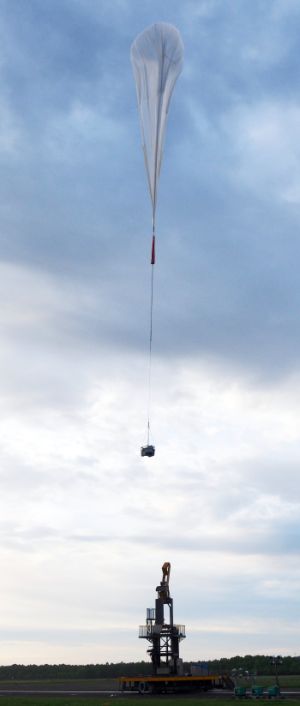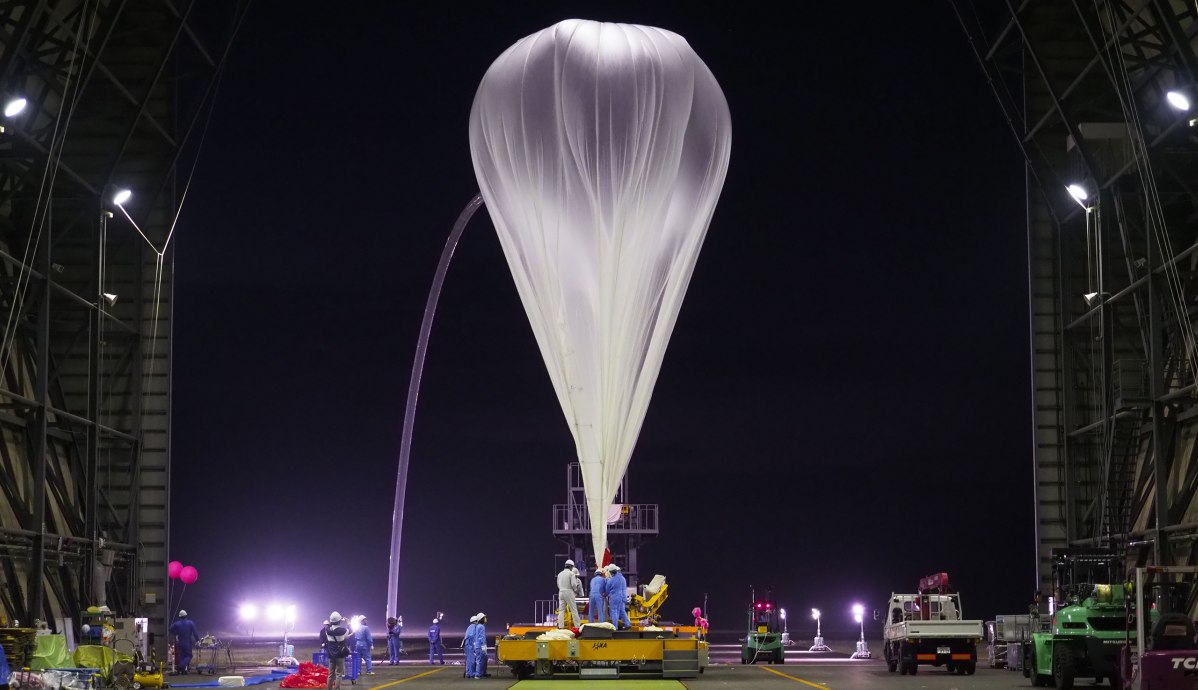News Archive
-
August 11 2017
JAXA closes its balloon launch campaign for this year
Taiki, Hokkaido, Japan.- The balloon launch campaign started on June 5th by the the Institute of Space and Astronautical Science (ISAS) -part of the Japan Aerospace Exploration Agency (JAXA) since 2003- which was being carried out at the Taiki Aerospace Research Field (TARF) in Hokkaido, has been called off.

In a press release published by ISAS in their Japanese language website on August 8th, the agency reports that were performed two succesful missions from the four originally planned for the campaign.
The first mission B17-02 was launched from Taiki on June 23, 2017, at 4:47 Japan Standard Time (JST) using a B-30 balloon with a volume of 30.000 cubic meters. The objective of the flight was to obtain samples of microorganisms as part of the BIOPAUSE program developed by Chiba Institute of Technology which aims to develop an overview of the stratospheric biosphere and the dynamics of biological flux in the stratosphere.
After launched, the balloon ascended at a rate of 330 meters/minute, reaching float altitude of 28 km at 6:15 JST while floating 40 kilometers east south-east of Taiki.
35 minutes later, the flight was terminated, and the payload was separated from the balloon descending in its own parachute. The samples were taken during the descent of the payload through the atmosphere.
Both elements hit the ocean surface in a spot located 15 km south-east of Taiki shore, being recovered by ship at 7:40 JST.
The second mission B17-04 was performed three days later on June 26 to test flight a balloon made with a new type of load tapes. What are these tapes? Every stratospheric balloon is built by sealing several gores that form the "bubble" that holds the gas. To allow the very thin fabric to withstand the tremendous forces acting once fully inflated, the gores sealings are reinforced with the so called load tapes which run vertically from the top to the apex of the balloon. Nowadays, all the load tapes used on the balloons built in Japan are made by foreign manufacturers.
The objective of this flight was to test the performance of a balloon using for the first time load tapes manufactured in Japan.
The test balloon, a B5 model measuring 5.000 cubic meters of volume, was launched at 3:33 JST on June 26. Ascending at a mean rate of 330 meters/minute, at 5:00 JST it reached float altitude of 24 kilometers over the Pacific Ocean, approximately 50 kilometers east of the launch base. After a leveled flight of little more than an hour the payload was detached from the balloon and by 6:50 JST both elements were recovered from a point located 20 kilometers south-east of Taiki's shore.

After these two succesful balloon missions, a long period started waiting for the right conditions to perform the other two missions planned for the campaign: the first flight of the VLBI (Very-long-baseline interferometry) platform being developed by JAXA/ISAS and a test evaluation of a super-pressure balloon for long duration constant-level flight, covered by a diamond-shaped net with a vertically elongated shape.
According to the press release an attempt to launch the VLBI platform was performed in July 24, but due to deteriorating wind conditions after balloon inflation the launch was cancelled, and the balloon was destroyed on ground. As I've mentioned before many times, the thin fabric that forms the "skin" of a stratospheric balloon is so delicate that once inflated it must be launched or discarded, it can't be re-used.
Then, 4 days before the originally planned closing date, the agency announced the termination of the campaign for this year.
As occur around the world to many other balloon programs, climate change is notably altering the meteorological patterns, thus reducing steadily the balloon launch opportunities during the year.
-
Share this on social media


